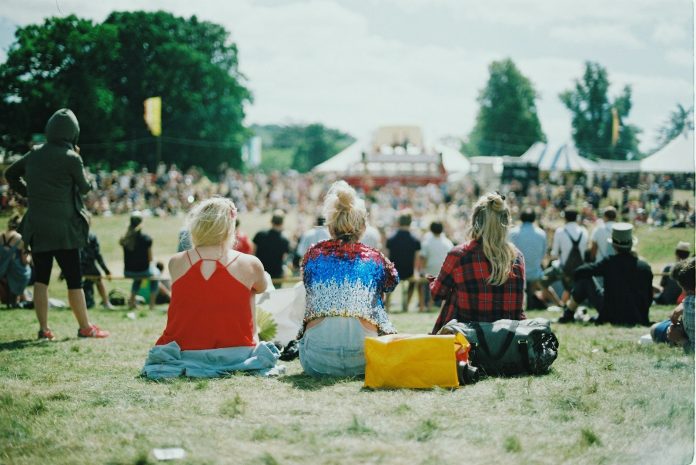Festivals are more than just music and dancing under the open sky. They’re immersive, transformative experiences that bring people together in celebration of art, culture, and community. But as magical as these events are, they come with an environmental cost—plastic-strewn fields, diesel-fueled generators, fast fashion outfits, and overflowing landfills are all common aftermaths. In recent years, however, festivalgoers and organizers alike have started embracing sustainability, aiming to party with a purpose. If you’re ready to be a conscious attendee, this guide will show you how to have a truly sustainable festival experience—without compromising on fun.
- Choose Eco-Conscious Festivals
The first step toward a sustainable festival experience is choosing events that align with environmentally responsible values. Many festivals now prioritize sustainability by implementing green policies, such as banning single-use plastics, sourcing renewable energy, or using composting toilets.
Look for festivals with B Corp certifications or those that publish annual sustainability reports. Events like Shambala (UK), Lightning in a Bottle (US), and Boom Festival (Portugal) are industry leaders in eco-consciousness. By supporting festivals that put the planet first, you’re voting with your wallet and encouraging more organizers to follow suit.
Tip: Before buying a ticket, visit the festival’s website and read about their environmental initiatives. Transparency is key.
- Plan Your Travel Smartly
One of the largest contributors to a festival’s carbon footprint is travel—particularly individual car use and flights. According to some estimates, transportation can make up 70-80% of a festival’s total emissions.
To reduce your impact:
Carpool with friends or strangers using festival forums and ride-share apps.
Take public transit whenever possible. Many festivals provide shuttles from nearby cities or train stations.
Avoid flights for short-haul trips. Opt for trains or buses instead.
Offset your carbon if you have no alternative to flying.
Tip: Festivals like Burning Man and Coachella often organize group rides—sign up early to secure a spot.
- Pack Sustainably and Light
The temptation to overpack is real, but less is definitely more when it comes to sustainable festival gear. Avoid single-use items and pack only what you truly need. Choose reusable, multi-purpose items over cheap, disposable ones.
Here’s a basic sustainable festival packing list:
Reusable water bottle (preferably stainless steel)
Cutlery set (fork, spoon, knife, and straw)
Reusable cup or mug
Solar-powered charger
Biodegradable toiletries
Reusable wet wipes and cloth napkins
Upcycled or rented tent and sleeping gear
Leave glitter and confetti behind unless they’re biodegradable. Microplastics from standard glitter are notorious environmental offenders.
Tip: Avoid bringing things you plan to “leave behind.” That tent you abandon? It doesn’t get reused—it gets trashed.
- Dress to Impress—Sustainably
Fast fashion is one of the most polluting industries on the planet, and music festivals are a hotspot for throwaway clothing culture. Sequined bodysuits and synthetic wigs may be Instagram-worthy, but they’re often made of plastics that never biodegrade.
Here’s how to dress sustainably at festivals:
Thrift it – Shop secondhand for your outfits. Vintage stores and clothing swaps are goldmines.
Rent it – Platforms like Rent the Runway and My Wardrobe HQ let you borrow festival-ready looks.
Upcycle – Get creative by customizing old clothes.
Support ethical brands – If buying new, choose from companies that focus on sustainable fabrics and fair labor practices.
Tip: Bring a few versatile pieces you can mix and match instead of packing an outfit for every day.
- Eat Low Impact
Food waste and packaging can quickly turn a green field into a trash heap. Thankfully, many festivals now offer plant-based and locally sourced food options.
Make your food choices count:
Go plant-based – Animal agriculture has a high environmental cost. Try out the vegan or vegetarian stalls.
Support local vendors – Not only is the food fresher, but it also reduces transportation emissions.
Bring snacks in reusable containers – Avoid individually wrapped items and instead prep your own trail mix, fruit, or sandwiches.
Compost and recycle – Use designated bins to dispose of your waste responsibly.
Tip: Some festivals have discounts for bringing your own utensils or cups—another reason to BYO gear.
- Respect the Land and Leave No Trace
The “Leave No Trace” principle is essential for festivalgoers, especially for those camping in natural areas. It’s about more than just cleaning up after yourself—it’s about leaving the environment in the same or better condition than you found it.
Here’s how:
Take all your belongings home – That includes tents, chairs, and even broken gear.
Use designated toilet areas – Avoid polluting water sources and respect sanitation rules.
Don’t trample plants or wildlife – Stick to paths and avoid setting up camp in fragile ecosystems.
Pick up after others – Be a good citizen and help clean up rogue trash, even if it’s not yours.
Tip: Make cleanup part of your group’s wind-down routine on the final day. Bring extra trash bags.
- Engage With the Festival’s Green Programs
Many festivals offer sustainability-focused workshops, eco-villages, and green volunteering opportunities. These aren’t just side attractions—they’re powerful spaces for education, connection, and activism.
You might find:
DIY craft workshops using recycled materials
Talks on climate change and community resilience
Composting and permaculture demonstrations
Greening crews that help maintain clean grounds
By participating, you’re contributing more than your ticket price. You’re becoming part of the cultural shift toward a greener festival industry.
Tip: If you love the mission, consider volunteering with the festival’s sustainability team next time.
- Be Mindful of Energy Use
From campsite lighting to charging phones, every watt counts when you’re trying to reduce your footprint.
Sustainable tips:
Bring solar lights instead of battery-powered or gas lanterns.
Charge your phone with a solar bank or share power with others.
Unplug when not needed – Avoid leaving devices charging longer than necessary.
Say no to generators – They’re noisy, polluting, and largely unnecessary.
Tip: Use glow-in-the-dark items or LED gear to stay visible and festive without relying on extra power.
- Spread the Word Without Being Preachy
One of the most powerful things you can do is influence others by leading through example. Sustainable festival culture grows when individuals normalize it.
Instead of lecturing:
Share your sustainable hacks on social media.
Invite friends to carpool or thrift shop with you.
Offer to help others sort their waste or reuse materials.
Compliment others on their eco-friendly gear—it encourages a trend.
Tip: The goal isn’t perfection—it’s participation. Every small action counts.
- Reflect and Reapply What You Learn
After the music stops and the last tent is packed away, take a moment to reflect. What worked? What didn’t? Could your sustainability efforts extend into your everyday life?
The most impactful festival experiences are those that leave us changed—not just emotionally, but also ethically.
Questions to ask yourself:
Can I carry these sustainable habits into my regular routine?
Can I inspire others to join in next time?
Can I volunteer or contribute to greening efforts at future events?
Festivals are temporary, but their impact—on the earth, our communities, and ourselves—can last a lifetime.
Final Thoughts
Having a sustainable festival experience isn’t about depriving yourself of joy. On the contrary, it’s about experiencing joy in a way that respects the environment and the communities around you. It’s about dancing a little lighter on the earth while still soaking in every beat, every connection, and every sunrise.
So the next time you buy a ticket, don’t just think about who’s headlining—think about the legacy you’ll leave behind. Because the best kind of party is one where everyone, including the planet, gets to celebrate.


